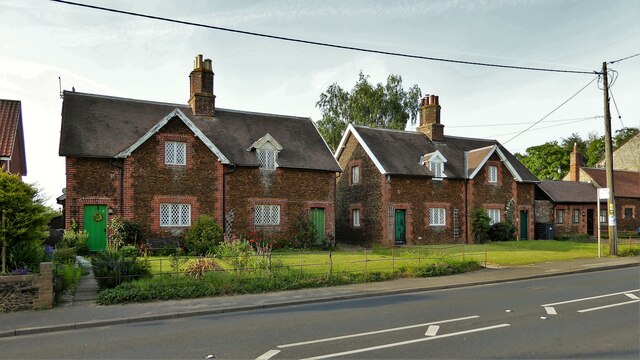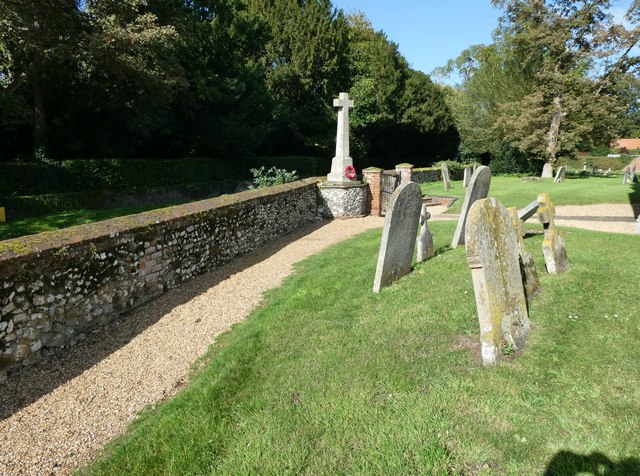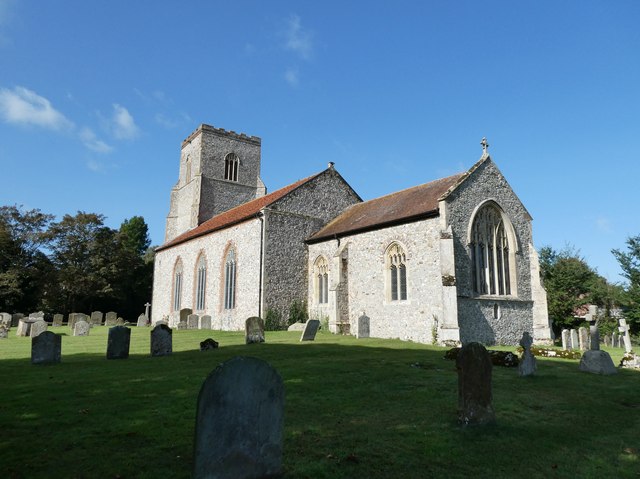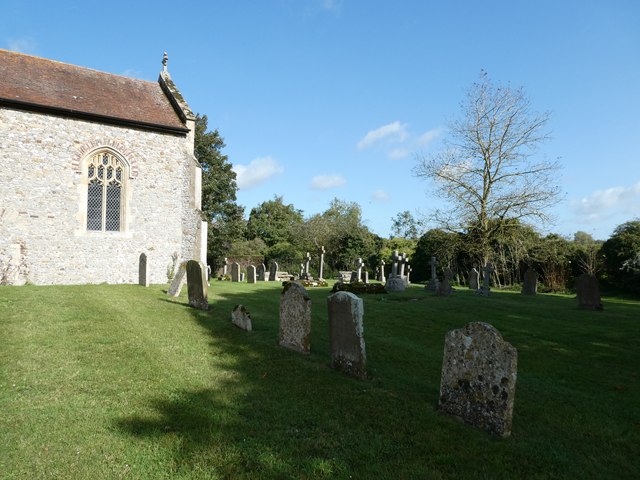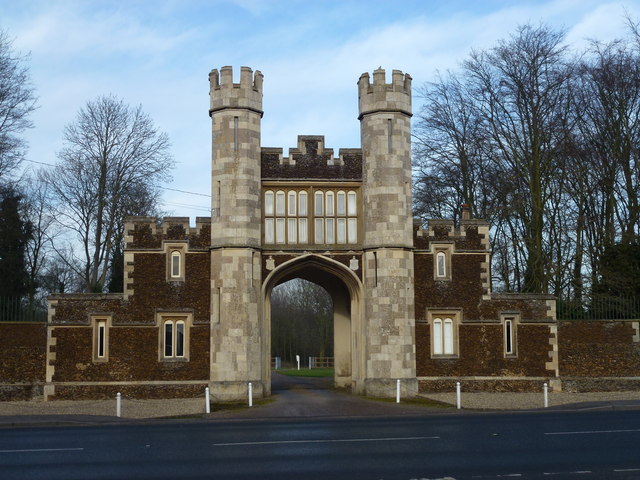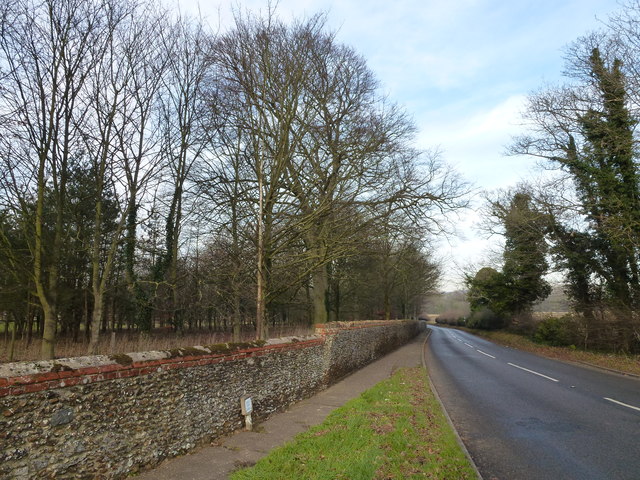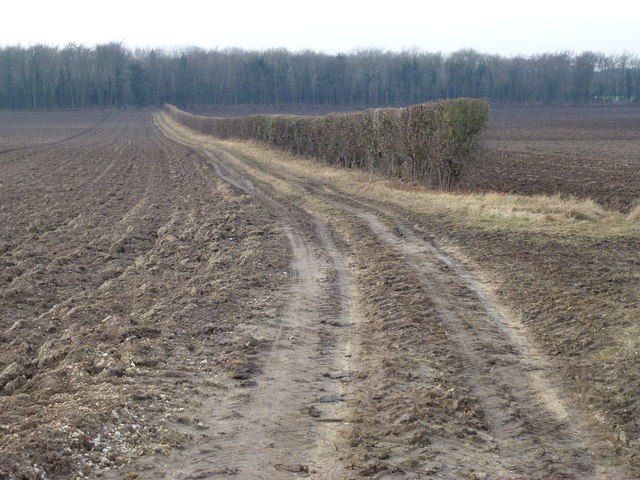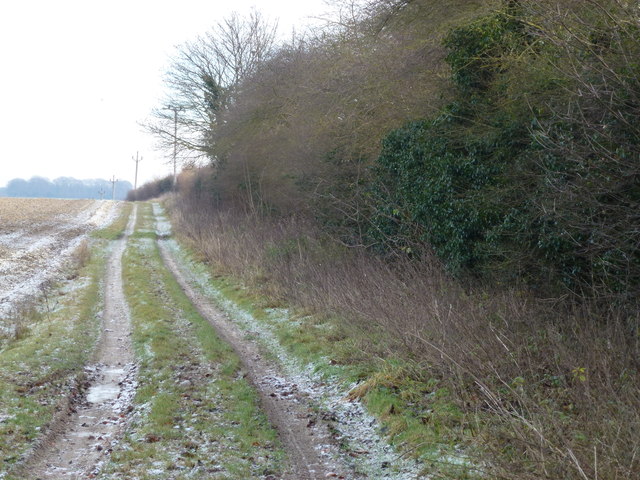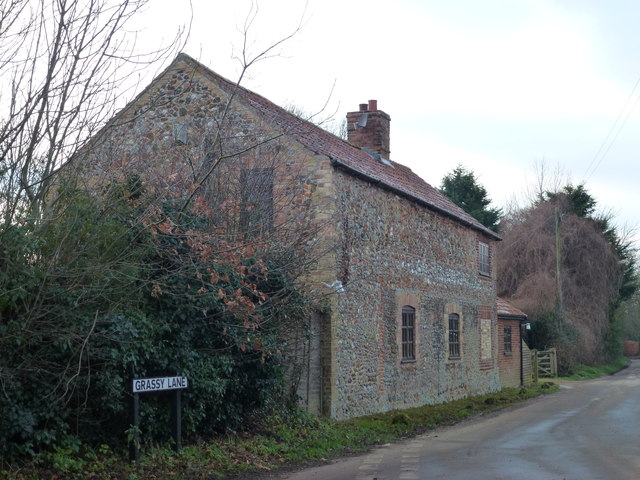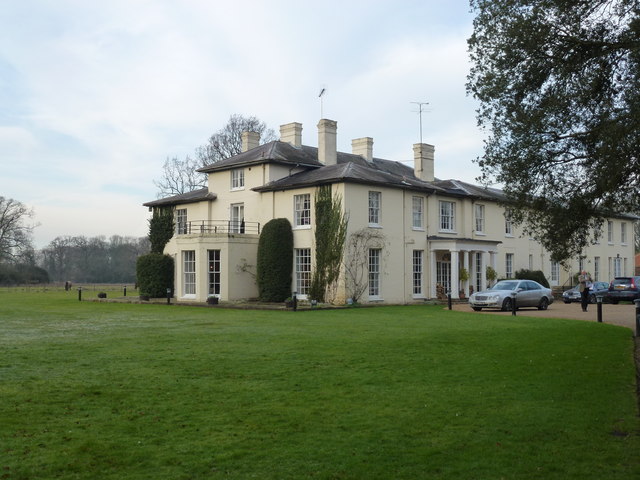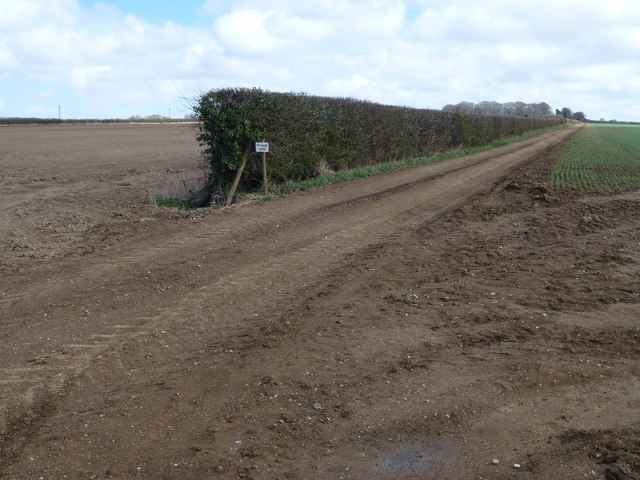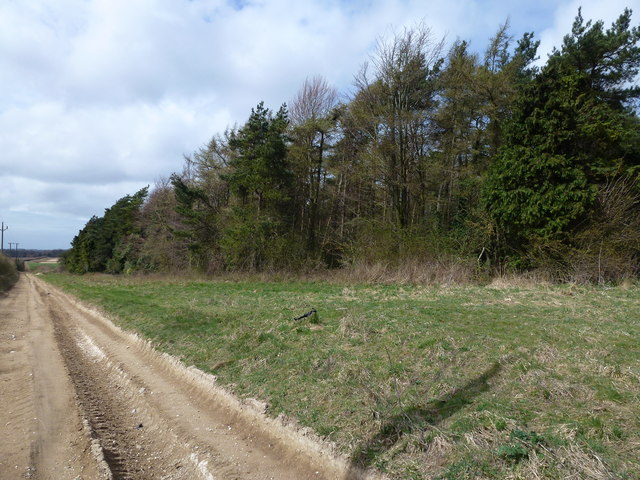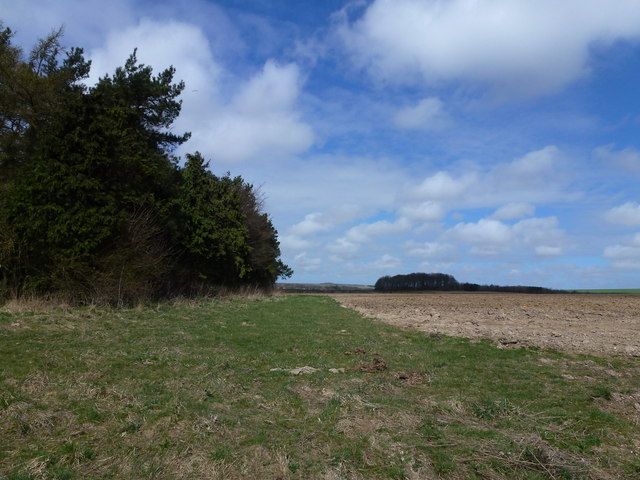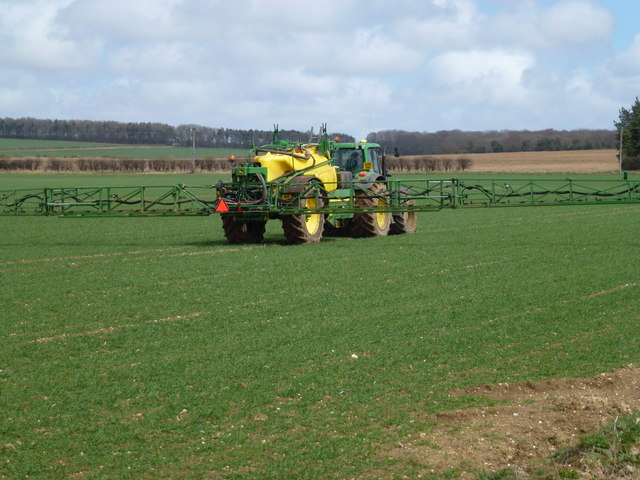Skate's Wood
Wood, Forest in Norfolk King's Lynn and West Norfolk
England
Skate's Wood
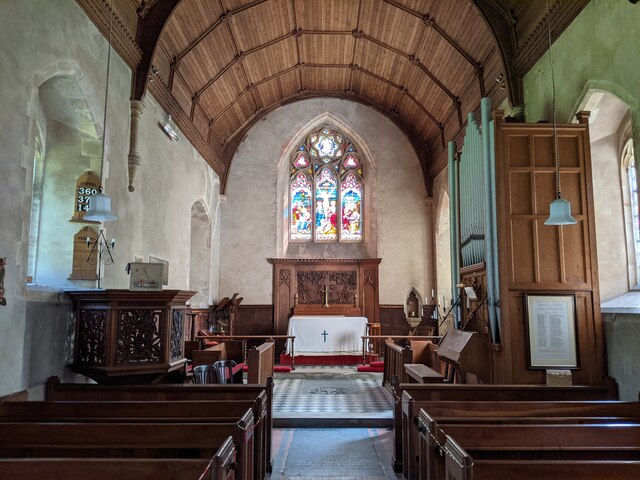
Skate's Wood is a charming woodland located in Norfolk, England. Situated in the small village of Wood, this forested area covers an approximate area of 50 acres and is a popular destination for nature lovers and outdoor enthusiasts.
This woodland is named after the Skate family, who were local landowners in the area. Skate's Wood is characterized by its diverse range of trees, including oak, birch, and beech, which create a picturesque and serene environment. The forest floor is covered in a thick carpet of moss and wildflowers, adding to its natural beauty.
As visitors explore Skate's Wood, they will encounter several well-marked trails that wind through the trees, providing a peaceful and tranquil escape from the hustle and bustle of everyday life. These pathways are suitable for both walking and cycling, making it an ideal location for a family day out or a leisurely stroll.
The woodland is home to a variety of wildlife, including squirrels, rabbits, and numerous species of birds. Birdwatchers can enjoy spotting woodpeckers, owls, and other feathered inhabitants of the forest. The peaceful ambiance of Skate's Wood also makes it an excellent spot for bird photography and observation.
Visitors to Skate's Wood are encouraged to respect the natural habitat and follow the designated trails to preserve the delicate ecosystem. There are no facilities within the wood itself, but nearby Wood village offers amenities such as parking, picnic areas, and a quaint village pub.
Skate's Wood is a hidden gem in Norfolk, offering visitors a chance to immerse themselves in nature and enjoy the tranquility of a woodland setting.
If you have any feedback on the listing, please let us know in the comments section below.
Skate's Wood Images
Images are sourced within 2km of 52.787821/0.54441968 or Grid Reference TF7124. Thanks to Geograph Open Source API. All images are credited.
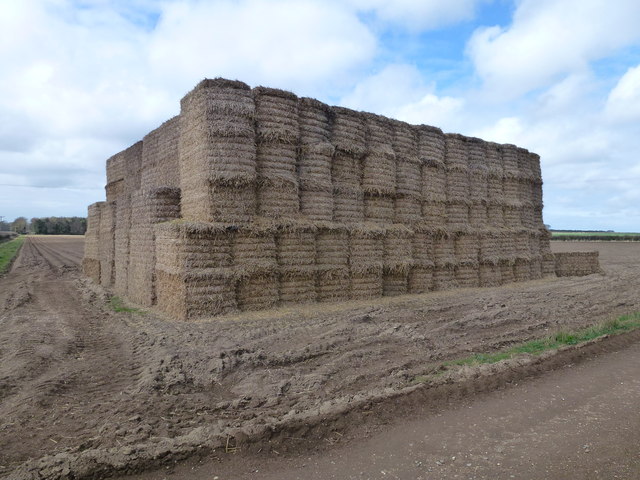
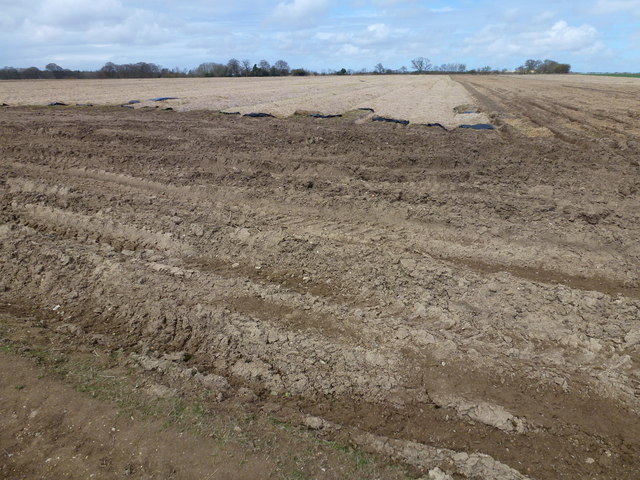

Skate's Wood is located at Grid Ref: TF7124 (Lat: 52.787821, Lng: 0.54441968)
Administrative County: Norfolk
District: King's Lynn and West Norfolk
Police Authority: Norfolk
What 3 Words
///places.kebabs.resonated. Near Grimston, Norfolk
Nearby Locations
Related Wikis
Congham
Congham is a village and civil parish in the English county of Norfolk. It is situated some 6 miles (10 km) east of the town of King's Lynn and 34 miles...
Hillington railway station
Hillington railway station was a station in Hillington, Norfolk on the now closed Midland and Great Northern Joint Railway line between South Lynn and...
Hillington, Norfolk
Hillington is a village and civil parish in the English county of Norfolk. It covers an area of 10.27 km2 (3.97 sq mi) and had a population of 287 in 123...
River Cong (Norfolk)
The River Cong is a stream in the west of the county of Norfolk, only 1.5 miles (2.4 km) in length. It is a tributary of the River Babingley. The spring...
Roydon, King's Lynn and West Norfolk
Roydon is a small village, civil parish and electoral ward east of King's Lynn in the English county of Norfolk. It covers an area of 4.62 km2 (1.78 sq...
Grimston, Norfolk
Grimston is a village and civil parish in the English county of Norfolk, approximately 6 miles north-east of King's Lynn. It covers an area of 18.08 km2...
Grimston Road railway station
Grimston Road railway station was a railway station in North Norfolk. It was on the Midland and Great Northern Joint Railway main line, carrying traffic...
Pott Row
Pott Row is an expanding village near King's Lynn, Norfolk. It is the western part of the civil and ecclesiastical Parish of Grimston. Pott Row and neighbouring...
Nearby Amenities
Located within 500m of 52.787821,0.54441968Have you been to Skate's Wood?
Leave your review of Skate's Wood below (or comments, questions and feedback).
